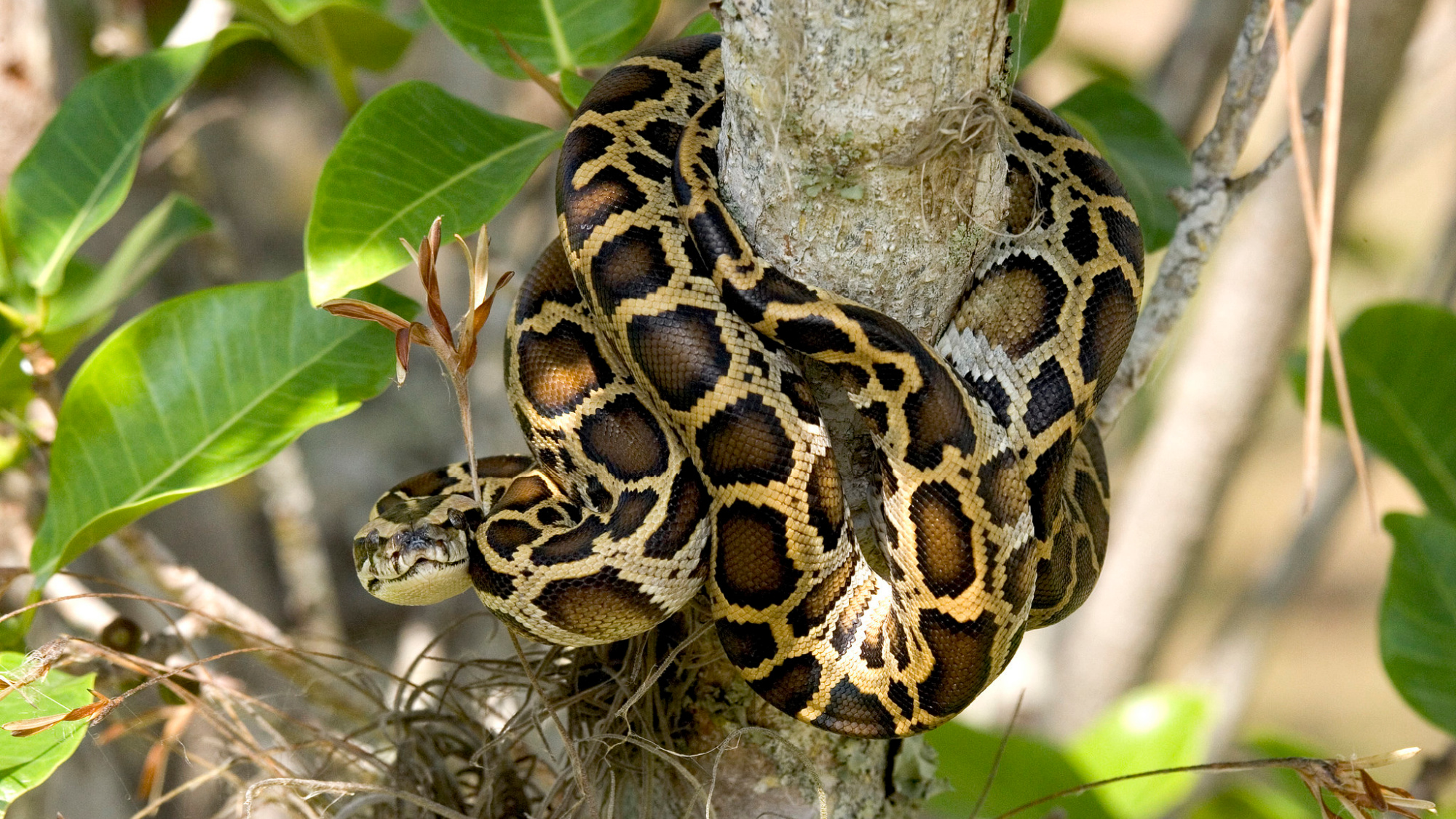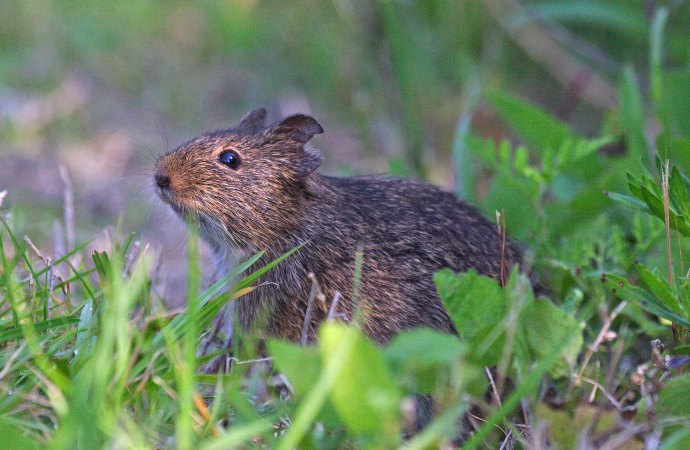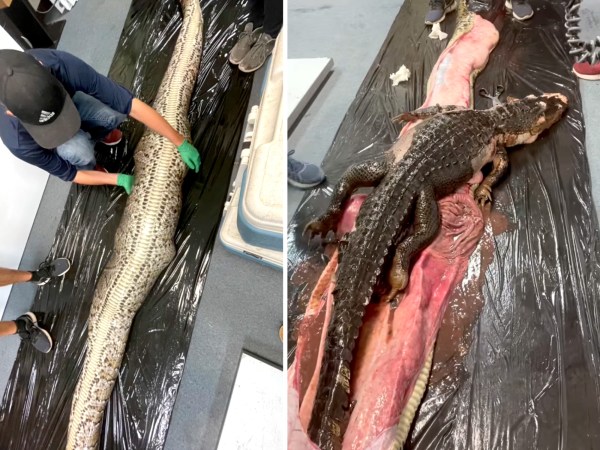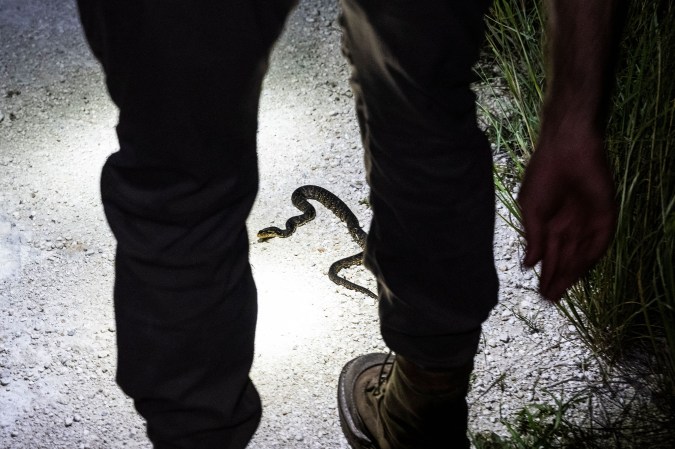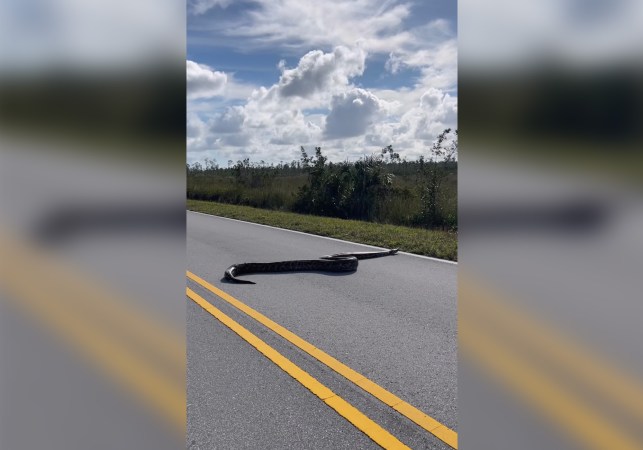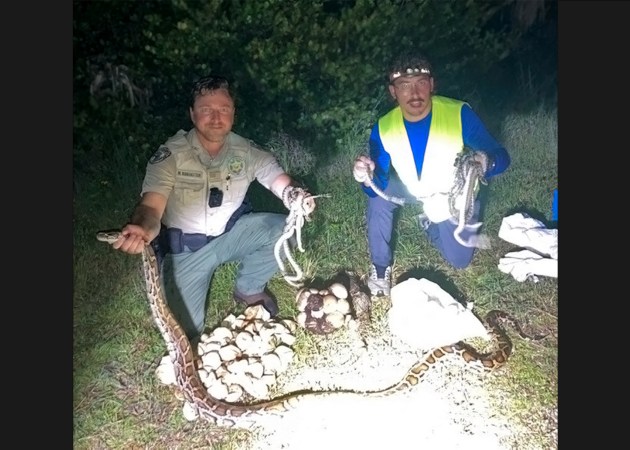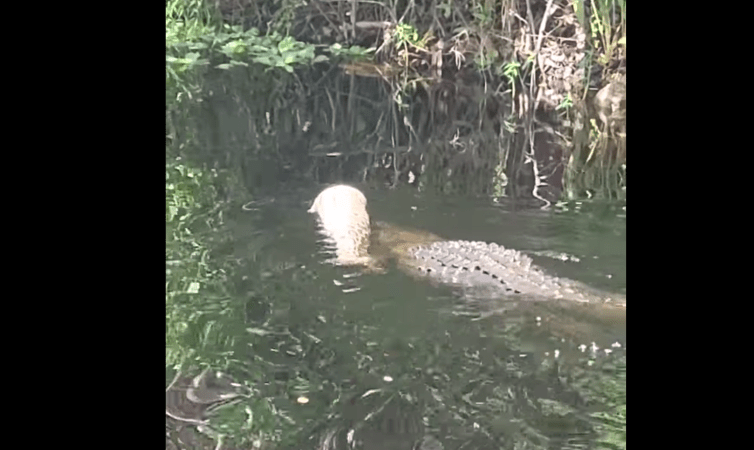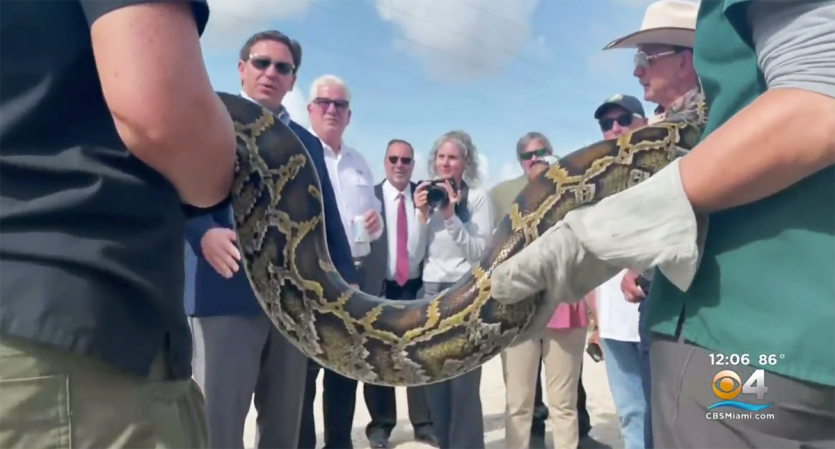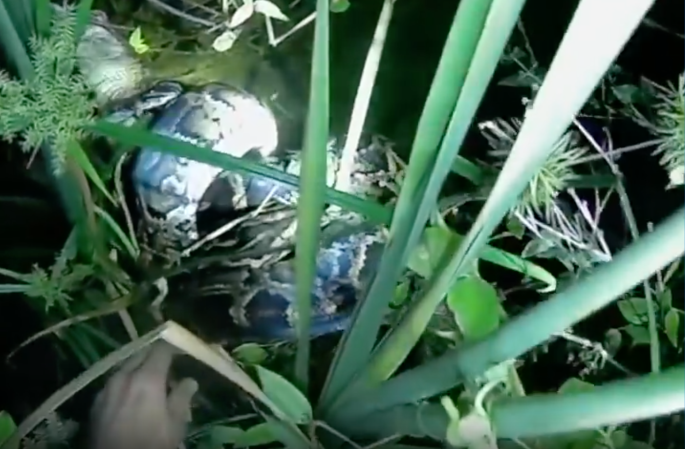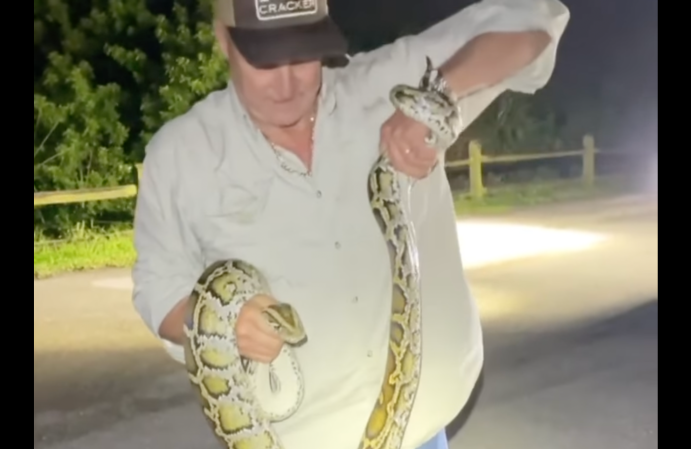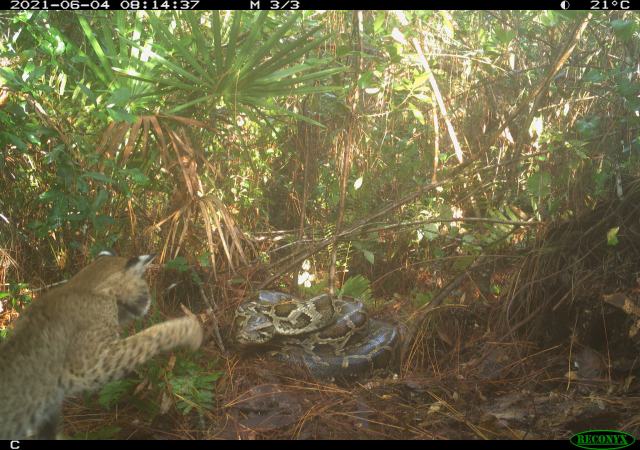It started in the 1990s in southern Florida. Anglers and hunters in the Everglades began noticing the raccoons, rabbits, armadillos, and other small critters they normally saw before dawn and after dark were no longer abundant. Now, scientists are pointing to an ecological reason for their disappearance: a growing invasion of Burmese pythons.
Fast forward to December 2022 in the Everglades, and researchers with the Conservancy of Southwest Florida caught and killed the heaviest Burmese python yet recorded in Florida, a 17-foot, 7-inch giant weighing 215 pounds. Ian Bartoszek, Ian Easterling, and Kyle Findley, all CSF employees, caught the snake, which topped the previous Sunshine State python weight record of 185 pounds. In the time since then, he and other concerned scientists have found proof that the invasive snakes are slowly spreading to the north.
“We’re seeing [pythons] show up in counties further and further to the north,” CSF Bartoszek told Business Insider in early September. “It really does feel like an alien invasion.”
Taking Root
Not long after outdoorsmen and women in southern Florida noticed a dearth of small prey animals in the 90s, residents started finding large Burmese pythons. They were especially prominent in the Everglades, which lies at the southern tip of the state. The snakes multiplied exponentially in a very short time, and with no natural predators, they grew to huge sizes. (The CSF’s weight record still stands, but the record for the longest python ever captured was broken this July.)
Watch Next: Snake Hunters Catch the Longest Python Ever Recorded in Florida
The snakes got into the wilds of southern Florida through the pet trade. Owners either released them illegally or they got out of enclosures on their own. Florida’s wet, hot environment with abundant small prey and plenty of dense, vegetated cover makes ideal Burmese python habitat. Florida’s climate is similar to their native environments in Thailand, Myanmar, and Vietnam.
Florida’s Burmese python population has decimated native wildlife there. Everglades National Park has reported its bobcat, raccoon, and opossum population decreasing by 87 percent, with marsh and cottontail rabbits and foxes virtually disappearing. They’re also capable of eating deer and even alligators. The U.S. Geological Survey describes the Burmese python invasion as “one of the most intractable invasive-species management issues across the globe.”
Spreading Northward
Over the last few decades, the snakes have been spotted further north in the Sunshine State. They’ve spread into the Miami area and west toward the Gulf Coast, where they’ve been caught as far north as Lake Okeechobee. There are also multiple reports of the snakes being found in neighboring Georgia as well as southeast Louisiana. The assumption is that they’ll eventually be pushed back southward by cold, winter weather, since Burmese pythons struggle to survive at below-freezing temps. But there’s a chance they could evolve to become more cold-tolerant the more they breed and expand across the continent.
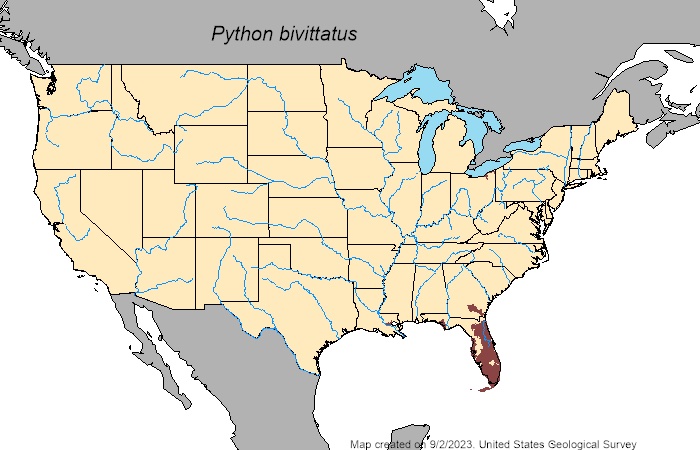
Florida’s 2010-2011 winter is a perfect example. There were multiple cold snaps that winter, which killed some snakes. But it also made surviving pythons more cold-tolerant and capable of continuing their northward spread. Scientists have developed computer models predicting that as the climate continues to warm, Burmese pythons could eventually spread as far north as Oregon, Washington, Idaho, and even Canada.
Bartoszek has recorded radio-tagged pythons traveling up to a mile per day, and they’ve been seen swimming 15 miles from shore, Business Insider reports. In just a few decades they’ve spread from the Florida Keys into the mainland Florida peninsula, roughly 130 miles to the north. In a sense, their expansion northward has already begun.
“I just developed this mantra over the years,” Bartoszek told the publication. “Don’t underestimate the Burmese python.”

